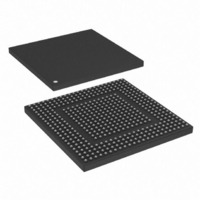MPC8308VMAGD Freescale Semiconductor, MPC8308VMAGD Datasheet - Page 883

MPC8308VMAGD
Manufacturer Part Number
MPC8308VMAGD
Description
MPU POWERQUICC II PRO 473MAPBGA
Manufacturer
Freescale Semiconductor
Datasheets
1.MPC8308VMAGD.pdf
(90 pages)
2.MPC8308VMAGD.pdf
(2 pages)
3.MPC8308VMAGD.pdf
(1170 pages)
4.MPC8308VMAGD.pdf
(14 pages)
Specifications of MPC8308VMAGD
Processor Type
MPC83xx PowerQUICC II Pro 32-Bit
Speed
400MHz
Voltage
1V
Mounting Type
Surface Mount
Package / Case
473-MAPBGA
Product
Network Processor
Data Rate
256 bps
Frequency
400 MHz
Supply Voltage (max)
3.6 V
Supply Voltage (min)
3 V
Supply Current (max)
5 uA
Maximum Operating Temperature
+ 105 C
Minimum Operating Temperature
0 C
Interface
I2C, JTAG, SPI
Mounting Style
SMD/SMT
Lead Free Status / RoHS Status
Lead free / RoHS Compliant
Features
-
Lead Free Status / Rohs Status
Lead free / RoHS Compliant
Available stocks
Company
Part Number
Manufacturer
Quantity
Price
Company:
Part Number:
MPC8308VMAGD
Manufacturer:
FREESCAL
Quantity:
300
Company:
Part Number:
MPC8308VMAGD
Manufacturer:
Freescale Semiconductor
Quantity:
10 000
Part Number:
MPC8308VMAGD
Manufacturer:
FREESCALE
Quantity:
20 000
Company:
Part Number:
MPC8308VMAGD400/266
Manufacturer:
FREESCAL
Quantity:
300
Company:
Part Number:
MPC8308VMAGDA
Manufacturer:
Freescale Semiconductor
Quantity:
10 000
- MPC8308VMAGD PDF datasheet
- MPC8308VMAGD PDF datasheet #2
- MPC8308VMAGD PDF datasheet #3
- MPC8308VMAGD PDF datasheet #4
- Current page: 883 of 1170
- Download datasheet (9Mb)
Valid combination for protocol select is:
15.5
The SerDes is capable of several different power management states depending on the settings of the
protocol selection and power down signals.
By setting the register field SRDSCR0[24] powers down the entire SerDes and is comparable to the PCI
Express L2 low power link state. The steps for powering down the SerDes are as follows:
Freescale Semiconductor
•
•
1. Apply power to all XCOREVDD, XPADVDD, SDAVDD supplies.
2. Be sure all XCOREVSS, XPADVSS, and SDAVSS supplies are grounded.
3. Assert the SRDSCR0[24] control from the chip logic to whichever SerDes block is not in use. This
4. Tie all unused RXn and RXn serial differential inputs to XCOREVSS.
5. Float all unused TXn and TXn serial differential outputs.
6. If a SerDes block is not being used and has its own receiver and transmitter calibration external
7. Tie SD_REF_CLK and SD_REF_CLK both to XCOREVSS.
SRDSCR4 register
— Configure protocol select, reference clock frequency, and PCI Express ×1 lane (refer to
PCI Express mode (AD_PROTO_SEL/EH_PROTO_SEL[2–0] = 001) is only an ×1 lane. The
reference clock can be either 100 or 125 MHz.
safely parks all the analog circuitry and stops all SerDes-generated clocks.
resistors, then these can be tied to XCOREVDD for the receiver (SD_IMP_CAL_RX) and
XPADVDD for the transmitter (SD_IMP_CAL_TX).
Power Management: Power Down
Figure
•
•
•
15-6)
The entire SerDes need to be reset in order to activate lane A from
power-down. The SRDSCR4 register is initialized base on
RCWH[TSEC1M] and RCWH[TSEC2M]. The SRDSCR3 register is
not initialized based on RCWH[TSEC1M] and RCWH[TSEC2M]; it
needs to be done explicitly based on the usage scenario. (Refer to
Section 4.3.2.2.4, “eTSEC1
For reset from software, the recommended option is to use
SRDSRSTCTL[RST], and let the hardware control the timing of the
various SERDES resets and power-downs.
Software can poll SRDSRSTCTL[RDONE] to determine when the reset
is complete. For more information, see
Control Register (SRDSRSTCTL).”
If the entire SerDes is powered down, or even if parts of the SerDes is
powered down, all power pads in the SerDes must be powered.
MPC8308 PowerQUICC II Pro Processor Reference Manual, Rev. 0
Mode.”)
NOTE
NOTE
Section 15.3.6, “SerDesn Reset
SerDes PHY
15-11
Related parts for MPC8308VMAGD
Image
Part Number
Description
Manufacturer
Datasheet
Request
R
Part Number:
Description:
Development Boards & Kits - Other Processors MPC8308-NSG
Manufacturer:
Freescale Semiconductor
Datasheet:

Part Number:
Description:
MCU, MPU & DSP Development Tools For MPC8308 Ethernet USB I2C SPI
Manufacturer:
Freescale Semiconductor
Datasheet:

Part Number:
Description:
MCU, MPU & DSP Development Tools For MPC8308 Ethernet USB 32bit
Manufacturer:
Freescale Semiconductor
Datasheet:
Part Number:
Description:
Mpc8308 Powerquicc Ii Pro Processor Hardware Specification
Manufacturer:
Freescale Semiconductor, Inc
Datasheet:

Part Number:
Description:
BOARD REF DESIGN MPC8308
Manufacturer:
Freescale Semiconductor
Datasheet:

Part Number:
Description:
MPC8308 PowerQUICC II Pro Processor Hardware Specification
Manufacturer:
FREESCALE [Freescale Semiconductor, Inc]
Datasheet:
Part Number:
Description:
Microprocessors - MPU E300 ext tmp Qual266
Manufacturer:
Freescale Semiconductor
Datasheet:
Part Number:
Description:
Microprocessors - MPU E300 ext tmp Qual333
Manufacturer:
Freescale Semiconductor
Datasheet:
Part Number:
Description:
Microprocessors - MPU E300 EXT TEMP PB 400
Manufacturer:
Freescale Semiconductor
Datasheet:
Part Number:
Description:
Microprocessors - MPU E300 MP Pb 266
Manufacturer:
Freescale Semiconductor
Datasheet:
Part Number:
Description:
Microprocessors - MPU E300 MP Pb 400
Manufacturer:
Freescale Semiconductor
Datasheet:
Part Number:
Description:
Microprocessors - MPU E300 MP Pb 333
Manufacturer:
Freescale Semiconductor
Datasheet:
Part Number:
Description:
Manufacturer:
Freescale Semiconductor, Inc
Datasheet:
Part Number:
Description:
Manufacturer:
Freescale Semiconductor, Inc
Datasheet:
Part Number:
Description:
Manufacturer:
Freescale Semiconductor, Inc
Datasheet:











